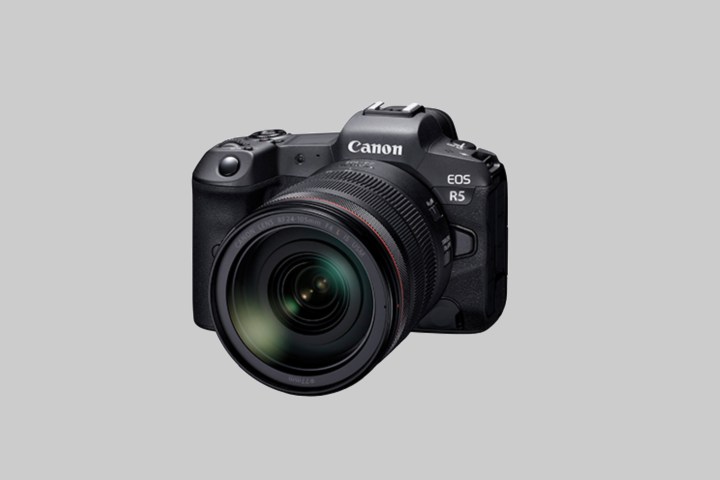
Less than two years after venturing into full-frame mirrorless, Canon has unveiled the “next generation” of EOS R with a camera that appears to address the biggest complaints from the original. Teased on Thursday, February 13, the Canon EOS R5 will house image stabilization, 8K video, 12-20 fps burst shooting, and dual memory card slots. In the announcement, Canon also shared that nine RF lenses will be launched in 2020.
Canon says the camera will have a newly developed full-frame sensor but didn’t offer any hints on the camera’s resolution. If the 8K video is any indication, however, that sensor’s pixel count will be on the high side. An 8K camera needs at least 33.2 million pixels on the sensor, or 33.2 megapixels — if the camera uses the full sensor to record video.
And in a move to compete with the likes of the Sony a9 series, Canon says the camera will capture bursts up to 20 fps using the electronic shutter and 12 fps using the mechanical shutter. The camera will be designed for sports and fast subjects, the company says. The high-resolution video will also open up the possibility of grabbing stills from the video when that burst speed isn’t enough.
Finally, the R5 will join Sony and Nikon in building image stabilization into the body itself. With the R, Canon said that in-lens stabilization was the “optimum system.” But in-body systems can often work together with lens systems for more stabilization — and Canon says that will be the case with the R5.
The R5 will also have “dual media card slots,” though Canon did not indicate if those slots would be the traditional SD cards or something like CFast or XQD, which tend to offer higher speeds. The EOS R’s single slot is one of the reasons the EOS R doesn’t reach the pro designation, since many pros need to write the same files to two separate cards in order to prevent losing images to a card failure.
As a teaser and not a full-specification announcement, Canon has left the rest up to speculation, adding that the R5 will have “state-of-the-art technologies.” Fast cameras usually need a lower resolution in order to keep up, so while the 8K camera can’t have a 20-megapixel sensor, it may not reach much further than 33 megapixels required for the video. The speed suggests a next-generation image processor capable of handling those 8K videos and 20 fps bursts.
Canon also said nine lenses are slated for release in 2020 — among them, the RF 100-500mm f/4.5-7.1 IS USM and two teleconverters, the Extender RF 1.4× and Extender RF 2×.
Canon did not indicate when the EOS R5 will launch.



